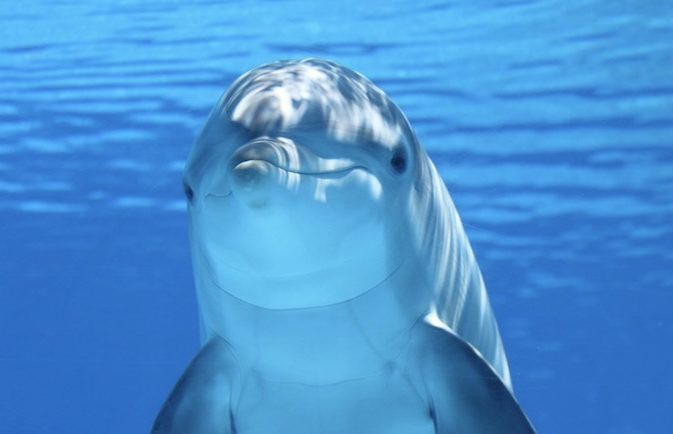Team of Researchers Working On a Drone That Can Collect Biological Samples Expelled from Dolphin’s Blowholes

Located in the central-southern portion of the United States, lies Oklahoma. The landscape stretches across the Great Plains and US Interior Highlands which contribute to frequent severe weather patterns. The Unmanned Systems Research Institute (USRI), directed by Professor Jamey Jacob at Oklahoma State University (OSU) has become well known for developing drone systems to be used by climate experts. But what may come as a surprise is that USRI is also making headway in a project involving dolphins. Jason Bruck, a teaching assistant professor from OSU’s Integrative Biology department wants to find a way to use drones to collect biological samples from dolphins in the wild.
Collecting samples from wild dolphins can give biologists a lot of information on the animal’s overall health, migratory and mating patterns, diet, and how the environment affects them. Traditionally samples would be collected by catching, handling, and releasing wild dolphins, or using a dart system. While these methods provide a great source of biological samples they are extremely time consuming, very costly, and invasive. Studies have shown that a dolphin’s cortisol levels spike, showing stress when put in these situations. So researchers like Jason want to find a way to collect samples without causing stress to the dolphins that would alter the sample results.
A team of researchers from Australia found great success in using a drone to collect biological samples from the mucus expelled in the mist from a whale’s blowhole. The problem that Jason has found is that unlike large whales that aren’t easily disturbed by the presence of a drone, smaller aquatic mammals like dolphins are highly sensitive to the loud sound of a standard drone, making it difficult to use them to capture blowhole samples. So Jason has begun a collaboration with USRI, the School of Mechanical and Aerospace Engineering, and the Division of Engineering Technology to create a drone that could stealthily capture blowhole samples from dolphins in the wild.
Before beginning the work on a drone that can travel long distances with little noise, Jason first had to get a better idea as to a dolphin’s physical perception of the world. The question posed was how much surrounding sound can a dolphin pick up and what are the limits of its line of vision both in the water and above the surface. To complete any tests on live animals Jason and his graduate students traveled to Dolphin Quest in Bermuda, an ocean fed lagoon where trained dolphins can come and go as they like. Here scientists are able to study dolphins without stressing the animals out. If a dolphin doesn’t want to participate, it simply swims off which is why researchers have to develop programs that will engage the dolphins.
With the help of trainers from Dolphin Quest and engineers from OSU, Jason placed a large Hobermann sphere, an expandable sphere, on a platform of the lagoon. Scattered along the inside of the sphere was a series of lights the dolphins were trained to respond too. This gave Jason a point of reference as to a dolphin’s line of view. To test their hearing, the team placed cameras and microphones around the lagoon to capture the dolphin’s response to prerecorded drone sounds played over the lagoon at different heights. With this information, the next step was to simulate the rate of mist coming from a dolphin’s blowhole and how a drone could capture it.
The engineers once again built a device for these tests called Robodolphin, a 3D printed replica of a dolphin nasal passage. After observing all the ways a dolphin releases air from their blowhole, Robodolphin was calibrated to mimic the action. Next, it was time to practice collecting samples from Robodolphin with a regular drone to map out exactly how the device needs to be flown. The first round of tests saw Robodolphin placed on a truck bed followed by a speedboat to test the drone in multiple environments.
The collaborating teams have gathered all the data needed. They are at the stage now that the information is being compiled together to give them a plan for building a drone that can capture blowhole samples without a dolphin knowing it is there. If Jason is able to collect biological samples from dolphins that do not force a spike in cortisol levels, he and other researchers can learn a lot about the true state of dolphins in the wild. As assistant professor Rick Gaeta of the School of Mechanical and Aerospace Engineering explained, “The overall research objective is to be able to understand, capture and measure dolphins’ stress levels in a wild environment that are due to a variety of things. But most importantly, human-made factors in the ocean such as industrial oil extraction, shipping noises, military sonar, and other sounds can affect their stress levels.” This multidisciplinary project, stemming from the American Great Plains is a first of it’s kind, and as Rick so aptly went on to say, “This will be part of a larger story.”
|